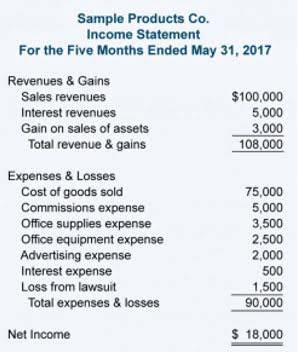
In the next section, the change in net working capital (NWC) – i.e. the increase / (decrease) in net working capital (NWC) – will be determined. Briefly, an increase in net working capital (NWC) is an outflow of cash, while a decrease in net working capital (NWC) is an inflow of cash. The formula to calculate the incremental change in net working capital (NWC) divides the change in net working capital (NWC) by the change in revenue. When it comes to managing a company’s finances, working capital and net working capital are two important concepts to understand.

Working Capital Cycle

By efficiently managing working capital, companies can reduce their reliance on external financing, minimize interest expenses, and improve their overall financial performance. Effective working capital management also enables businesses to negotiate better terms with suppliers, maintain a positive credit rating, and seize growth opportunities. By keeping a close eye on your current assets and liabilities, you can ensure that your business remains liquid, seizes growth opportunities, and maintains a strong financial position. The working capital formula is a straightforward calculation that provides a snapshot of a company’s financial position. To calculate working capital, subtract current liabilities from current assets. The resulting figure represents the working capital, which indicates whether a business has enough short-term resources to cover its obligations.
What is a statement of changes in working capital?
During this period, the company’s resources may be tied up in obligations or pending liquidation to cash. This metric serves as the lifeblood of a company’s operations, reflecting its ability to meet financial obligations. A higher cash flow signifies that the organisation’s income surpasses its expenditures, while lower cash flows indicate that expenses exceed income. Companies like computer giant Dell recognized early that a good way to bolster shareholder value was to notch up working capital management.

Personal Loans
Martin loves entrepreneurship and has helped dozens of entrepreneurs by validating the business idea, finding scalable customer acquisition channels, and building a data-driven organization. During his time working in investment banking, tech startups, and industry-leading companies he gained extensive knowledge in using different software tools to optimize business processes. The ability to pay short-term loans and other expenses is a massive advantage of managing your working capital. When they checked the value of the assets at hand, they saw enough funds to open a new branch. When you manage your working capital, you can track the increase or decrease in the working capital ratio.
- A company with positive working capital generally has the potential to invest in growth and expansion.
- A ratio greater than 1 indicates that a company has more current assets than current liabilities, which suggests that it has enough funds to cover its short-term obligations.
- This blog article delves into the significance of understanding your cash position and offers valuable tips for its effective management.
- But if the change in NWC is negative, the net effect from the two negative signs is that the amount is added to the cash flow amount.
- Working capital helps a company measure its ability to pay up its short-term expenses and debts within a year.
- Changes in working capital can occur when either current assets or current liabilities increase or decrease in value.
Which of these is most important for your financial advisor to have?
In our example, if the retailer purchased the inventory on credit with 30-day terms, it had to put up the cash 33 days before it was collected. Since companies often purchase inventory on credit, a related concept is the working capital cycle—often referred to as the “net operating cycle” or “cash conversion cycle”—which factors in credit purchases. Conceptually, changes in working capital formula the operating cycle is the number of days that it takes between when a company initially puts up cash to get (or make) stuff and getting the cash back out after you sell the stuff. For example, if it takes an appliance retailer 35 days on average to sell inventory and another 28 days on average to collect the cash post-sale, the operating cycle is 63 days.
The net working capital (NWC) is the difference between the total operating current assets and operating current liabilities. A positive working capital ensures that a company can meet its short-term obligations, such as paying suppliers, employees, and creditors. This liquidity is crucial for maintaining smooth business operations and avoiding financial distress. Calculating working capital is crucial for businesses of all sizes as it provides insights into their financial health and liquidity. By determining the amount of working capital available, companies can assess their ability to pay suppliers, handle unexpected expenses, and seize growth opportunities. The working capital cycle represents the period measured in days from the time when the company pays for raw materials or inventory to the time when it receives payment for the products or services it sells.
Learn At Your Own Pace With Our Free Courses
On the subject of modeling working capital in a financial model, the primary challenge is determining the operating drivers that must be attached to each working capital line item. 11 Financial may only transact business in those states in which it is registered, or qualifies for an exemption or exclusion from registration requirements. 11 Financial’s website is limited to the dissemination of general information pertaining to its advisory services, together with access to additional investment-related information, publications, and links. The statement of changes in working capital can be used to help you identify areas where your company may be struggling financially. It can also help you track trends over time, so you can make adjustments as needed.
The current assets column shows the income coming into the company’s account. An asset is regarded as current if it can be converted to cash within a short time (usually not more than a year). For emphasis, current assets can be in the form of cash, inventories, and trade receivables.
Current liabilities are the expenses a company is expected to pay up within a specific timeframe (consistently a year). Working capital refers to the money used to pay for short-term loans and expenses. It is the difference between the money coming in and the money going out of a company’s account. You can also define it as the difference between a company’s current income and liabilities.
For clarity and consistency, lay out the accounts in the order they appear in the balance sheet. However, this can be confusing since not all current assets and liabilities are tied to operations. For example, items such as marketable securities and short-term debt are not tied to operations and are included in investing and financing activities instead. In financial accounting, working capital is a specific subset of balance sheet items and is calculated by subtracting current liabilities from current assets. Since the total operating current assets and operating current liabilities were provided, the next step is to calculate the net working capital (NWC) for each period.
發佈留言